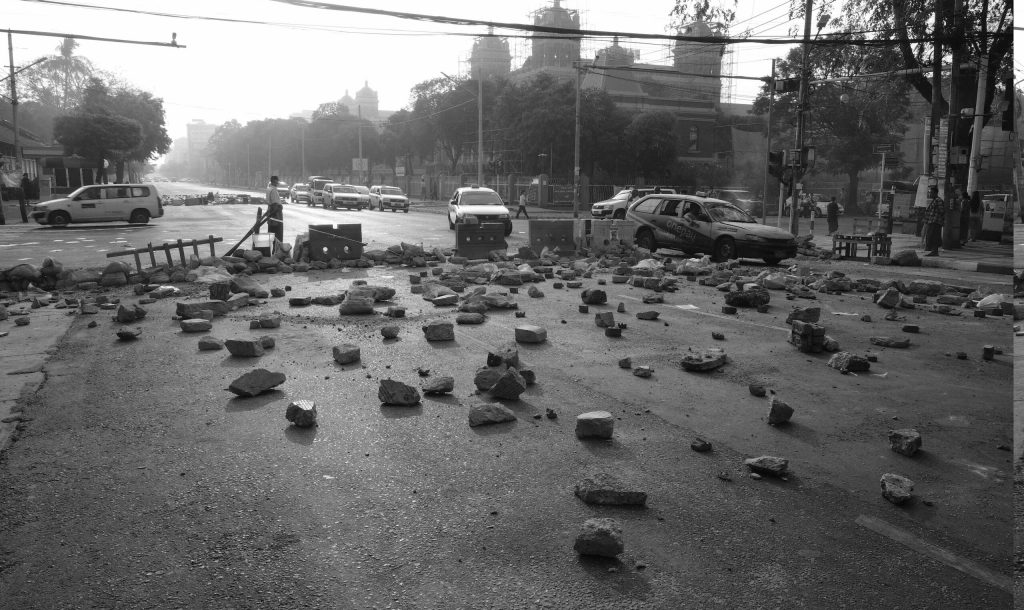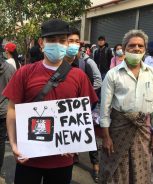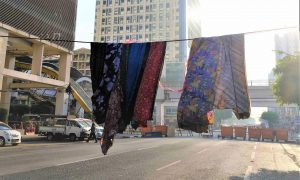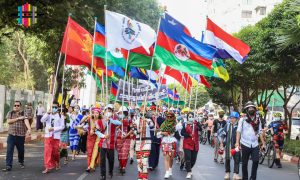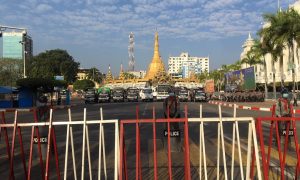Since the 1 February coup was launched by the Tatmadaw in Myanmar, different forms of violence have been witnessed throughout the borderlands as well as central areas. Much of this violence is simultaneously an instrument and a field for reproducing logics and techniques of control. Often though, such double feature of the regime’s violence remain hidden.
On one side of the road we see “broken engines” forcing cars to stop in the middle of the street, people squatting to lace up their shoes on zebra lines and pick up onions rolling away, fake Min Aung Hlaing funerals and other non/violent forms of powerful creative resistance and acts of defiance. As part of the highly intersectional and multi-ethnic anti-military movement(s) navigating both physical and digital spaces there is also “Soup Not Coup,” a sharp and ironic twitter account that perfectly captures the insights and dynamics of the demonstration’s revolutionary potential through the metaphor of the soup. A revolutionary, socio-political soup against the coup: but what boils in the coup’s soup?
On the other side of the road there are armoured military vehicles, water cannons, sniper rifles, assault rifles, shotguns, Pre-Charged Pneumatic (PCP) air rifles, slingshots, teargas grenades, spikes and clubs, sticks and swords, drones. Various kinds of ammunition and projectiles are dispersed on the street, from live to rubber rounds, from screws to marbles and stones.
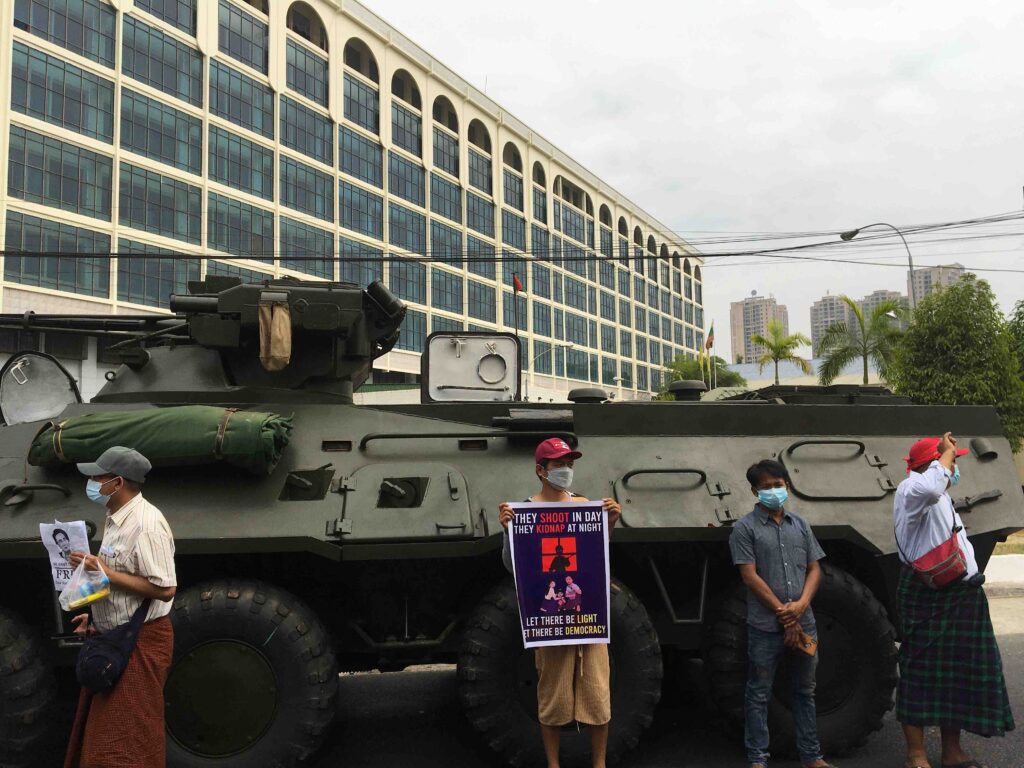
Protest posters draw attention to the methods employed to quash dissenters in front of military tanks. Image credit: Kummari.
Eleven days after a constitutionally baseless declaration of state of emergency, the military regime started deploying another form of violence. It released about 23.000 convicted individuals and weaponised them to contaminate private and shared water tanks, cut off electricity and set residencies in neighbourhoods on fire, spreading fear and tension in communities at night during curfew hours.
From ex-convicts, they were turned into “thugs”. Apprehended by self-organised community security groups, and found to be under the influence of drugs or with large sums of money in their pockets, these “thugs” were also labelled as drug addicts: socially and economically marginalised outcasts.
While community-based local security groups managed not to escalate the situation by avoiding administering vigilante justice and handing individuals over to the Myanmar Police Force, public outcry concerning tuned onto two main frequencies. The “thugs” themselves were condemned for their criminal actions and deviant motivations linked to money and/or addiction. At the same time, it was argued that the system was to blame, as the “thugs” had been exploited by the Tatmadaw.
Looking systemically at this reveals much. With weapons in the streets over recent weeks, for example, one can note that since the Second World War—and in particular in the last three decades—the Tatmadaw has gradually become self-sufficient in terms of small arms and ammunition manufacturing. The Ka-Pa-Sa (Karkweye Pyitsu Setyoun (Directorate of Defence Industries) has developed weapons production plants in about a dozen locations in Myanmar’s central areas. Knowledge and technical capabilities for small arms manufacturing has been transferred to the Ka-Pa-Sa from Israeli and Singaporean weapons manufacturing companies, especially after the European Union (then still the European Communities) and the US enforced an arms embargo after the 8888 protests. Patterns of arms production have also developed hand in hand with territorialisation processes as manufacturing has been concentrated in Myanmar’s central areas rather than in the borderlands.
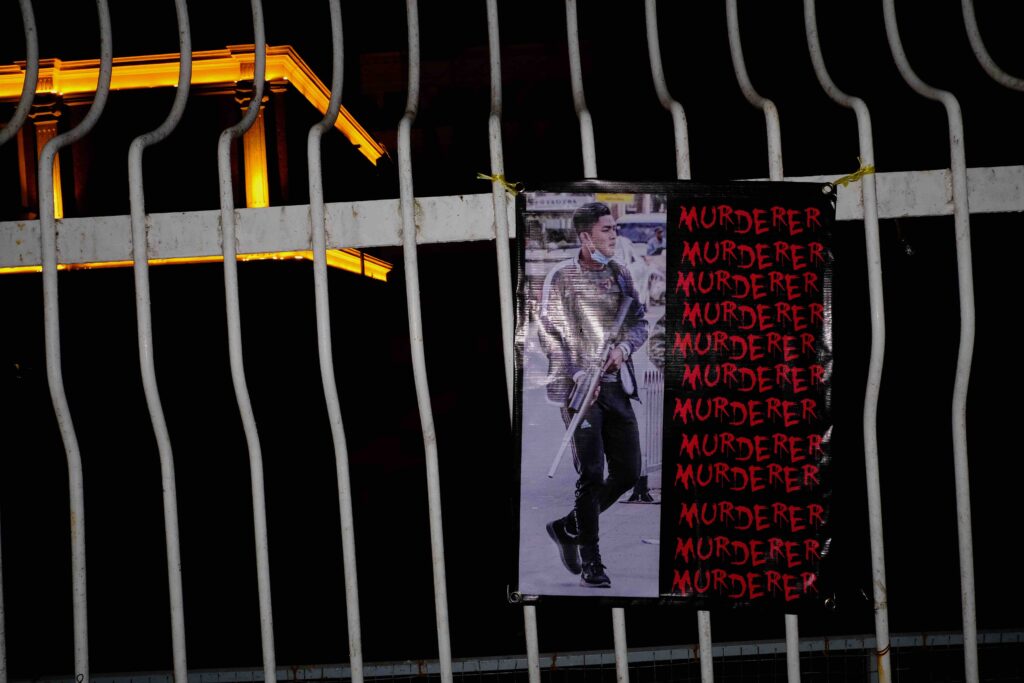
Image credit: Kummari
But looking systematically can also hide part of the picture: there are elements of the weaponry and violence deployed that are not only related to systems and structures but also to the reproduction of logics and techniques of control.
Networked authoritarianism at the edge
We should look beyond elite urban internet users to grasp the reach of Southeast Asian digital governance and its chilling effects
The weaponisation of “thugs”, as well as “fake monks”, speaks of a parallel with other techniques of violence and control that have been used throughout the borderlands for decades, and that now circulate in the cities as well. Think of porterage: forcing local dwellers in conflict zones to carry out military-related duties for the Tatmadaw. Think of human minesweepers: forcing civilians to walk in front of armed units to clear potential landmines. Think of the infamous 4-cuts: carving out a rebellious formation from a population by cutting their food, intelligence and information, funding, recruitment sources. Think of forced population displacement and relocation. Or of the division of territories into white, brown, and black zones that proceed in parallel with different rules of engagement and ethnic characterisations of space. Think of the formation of community defence militias via arming and training borderland village populations.
These techniques of violence and control have revolved in part around the idea of making an environment inhospitable and unliveable: reconfiguring the political ecology of a place and making social formations “emerge” from their environments so that they can be identified, defined, and managed.
They function on the reproduction of identities as well as on marginalisation. In the borderlands it has historically been the “ethnic” body that is reproduced, discriminated and marginalised via techniques of violence and control. Similarly, via the weaponisation of “thugs” the military regime reproduces ideas of deviance in order to divide and control the population.
The “thugs” are not only weaponised as an instrument to deliver violence and control, but they become also a “field” of discourses and practices in which different forms of discrimination and marginalisation are reproduced. The violence the military regime brings to the streets is also a matter of diffused micro-practices of violence and control that articulate marginalised communities and labels for human beings: “thugs”, “poor”, “ethnic minority”, “drug addicts”.
 Facebook
Facebook  Twitter
Twitter  Soundcloud
Soundcloud  Youtube
Youtube  Rss
Rss 